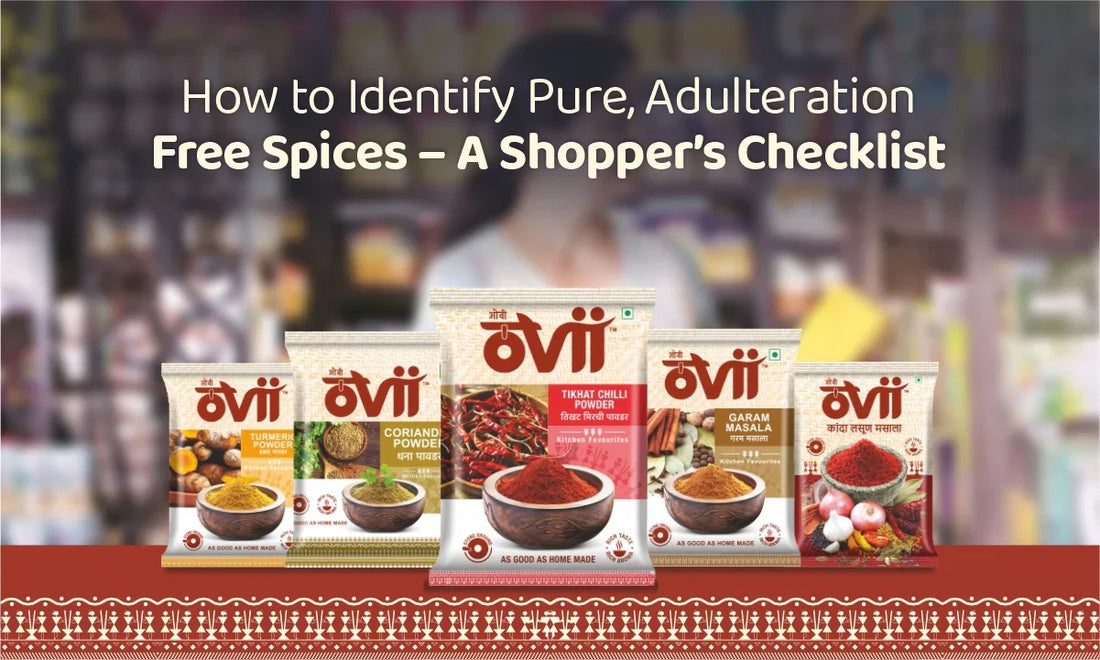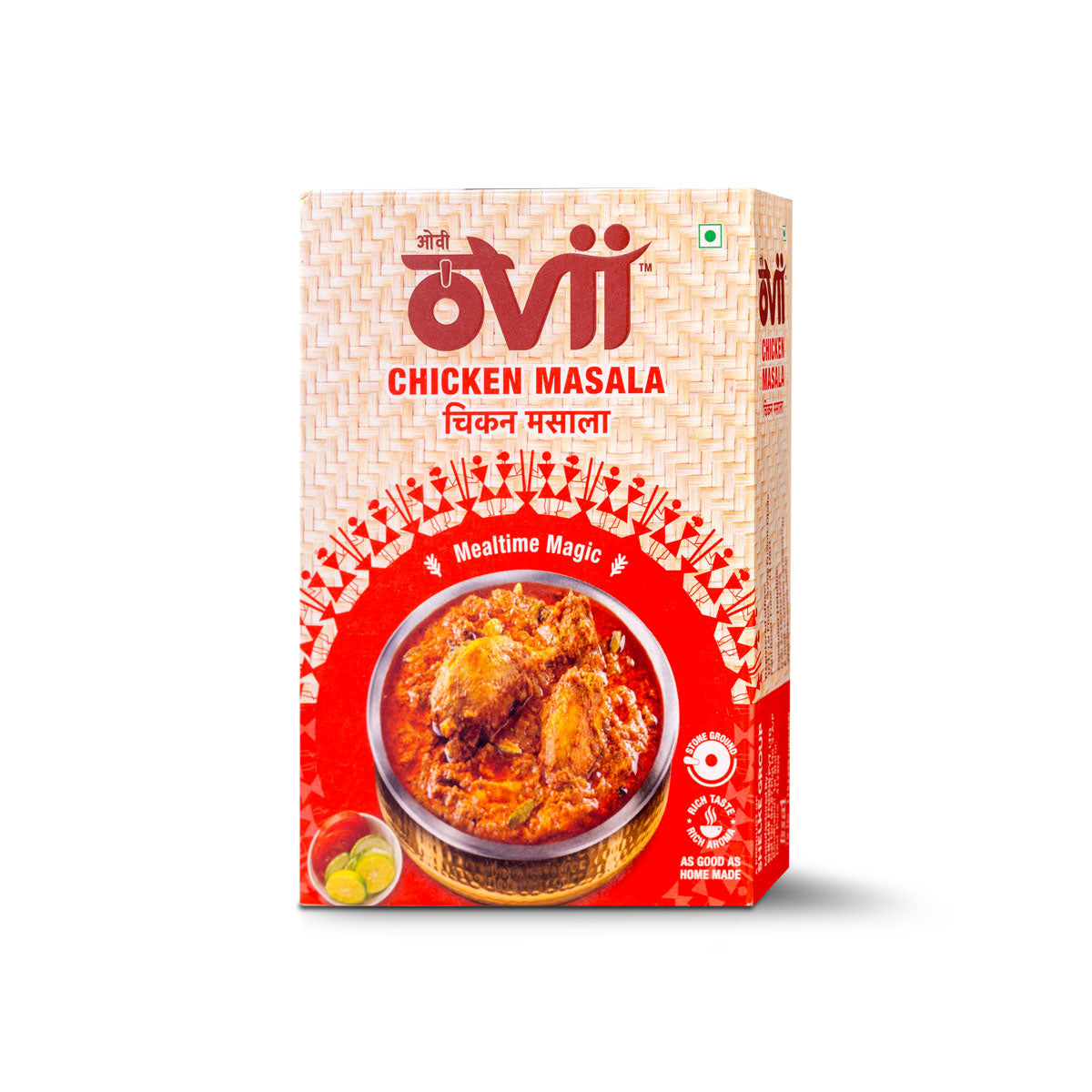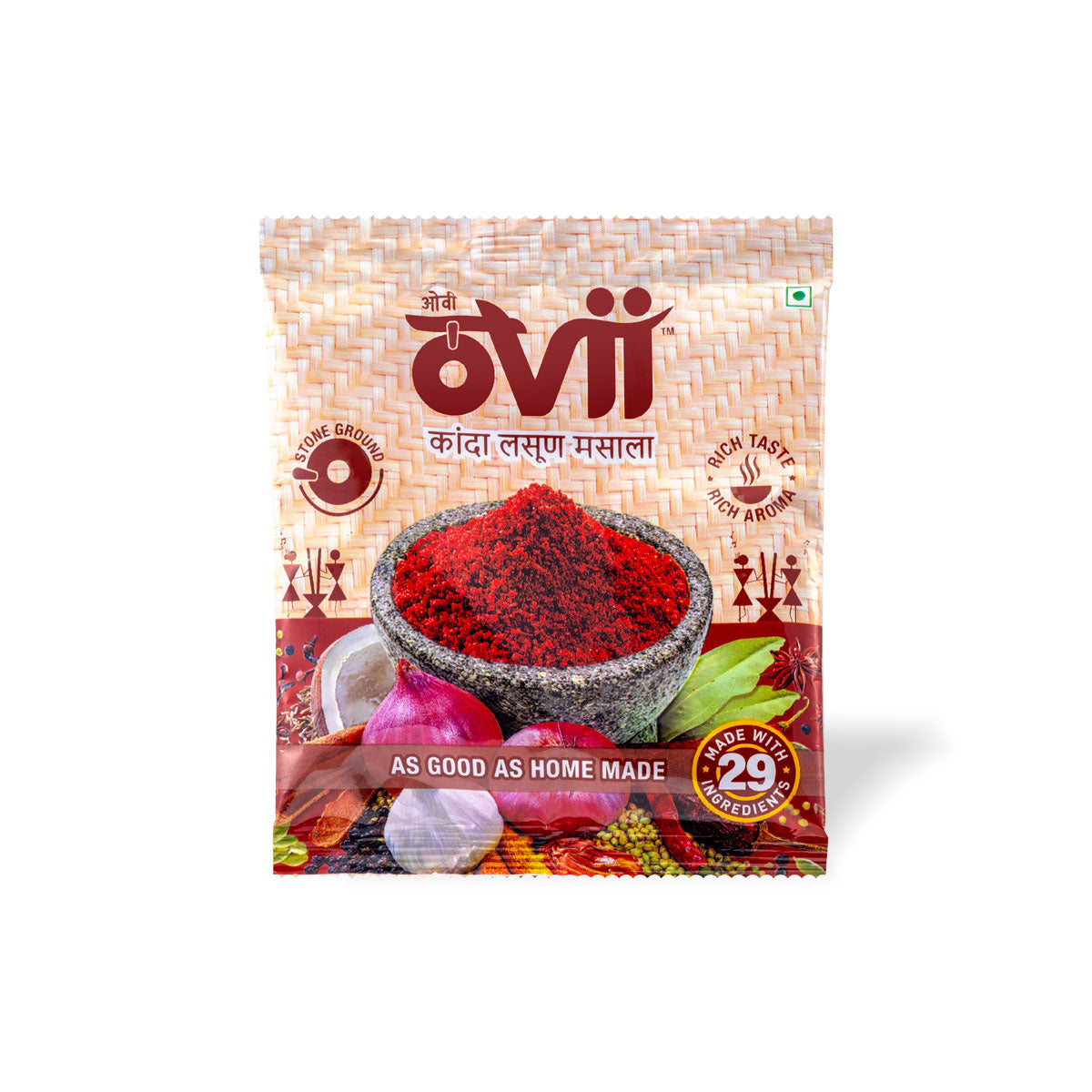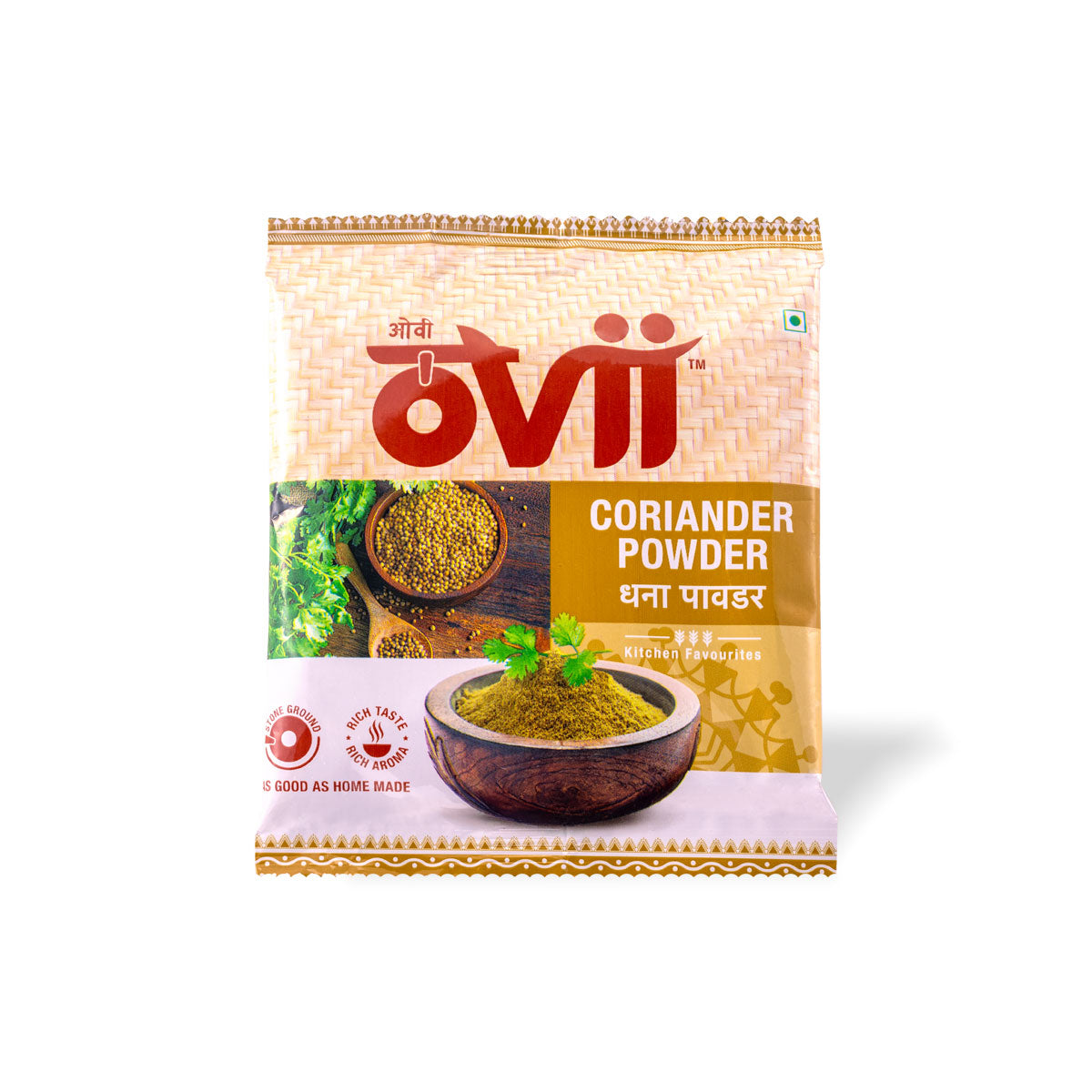
How to Identify Pure, Adulteration-Free Spices – A Shopper’s Checklist
In Indian kitchens, spices are not just flavouring agents—they are the backbone of every dish. From the morning poha tempered with turmeric to the robust gravies of Sunday lunches, spices define aroma, taste, and even nutrition.
But what if the very masalas you rely on are diluted, coloured, or artificially enhanced?
A 2022 report by the Food Safety and Standards Authority of India (FSSAI) found that nearly 15% of ground spices sold in open markets were adulterated—either with artificial colouring agents, starch fillers, or non-edible husk. For consumers, especially home cooks, this means risking both flavour and health.
So how do you identify pure, unadulterated spices? Here’s a shopper’s checklist—rooted in practicality, and refined by what we believe at Ovii.
1. Look for a Short, Transparent Ingredient List
The first step to spotting adulteration is reading the label. A genuine spice—especially basics like turmeric, red chilli, or coriander powder—should have just one ingredient listed: the spice itself.
Beware of terms like:
- “Flavour enhancer”
- “Food colour (permitted class)”
- “Anti-caking agent”
-
“Salt content”
These usually indicate bulk fillers or preservatives. At Ovii, our Turmeric Powder and Chilli Powder list only the sun-dried, stone-ground spice, with no salt, starch, or additives—because purity should never be complicated.
2. Colour Should Look Natural, Not Neon
One of the most common signs of adulteration is unnatural brightness. If your red chilli powder looks too vivid or your turmeric is almost lemon yellow, there’s a chance it’s been laced with synthetic dyes.
Artificial colouring agents like Sudan Red or Metanil Yellow are banned substances, yet still found in many low-cost blends. These chemicals have been associated with long-term liver and kidney damage.
A simple test? Smell the powder. Natural turmeric has a warm, earthy aroma. Authentic red chilli smells deep and smoky—not chemically pungent.
Our blog on why your curry might taste flat discussed how overcoloured powders add no real depth. That visual brightness is often just a marketing trap.
3. Pay Attention to Texture and Consistency
Pure spices are never overly fine. Why? Because over-processing destroys essential oils. A turmeric powder that clumps slightly or a chilli powder with subtle grain variation is often a sign of minimal processing and high freshness.
On the flip side, powder that’s too silky-smooth could be bulked up with starch, chalk powder, or soapstone.
At Ovii, we use traditional grinding methods for our Coriander Powder and Garam Masala, allowing the spice’s natural oils to remain intact—so you get real flavour with every pinch.
4. Smell Before You Buy (or Open It at Home)
Your nose knows best. Good spices don’t need to be cooked to smell great. Even when raw, they should emit a full, fragrant aroma.
Here’s what you should expect:
- Red Chilli Powder – Dry heat, a slightly sweet-smoky scent
- Turmeric – Deep, earthy and medicinal tones
- Coriander – Citrus-like brightness and spice
- Garam Masala – A layered mix of cinnamon, clove, and fennel
-
Kanda Lasun Masala – Smoky, garlicky depth with roasted notes
If a masala smells musty, metallic, or has no fragrance at all—it’s either stale or adulterated. In one of our earlier guides to choosing masalas by dish, we noted that the right aroma often tells you whether the masala will “catch” in hot oil or fall flat.
5. Always Choose Brands That Share Their Sourcing and Process
Many spice packets on shelves will show a brand name—but offer no information on where the spices are grown, how they are dried, or how they are stored. That’s a red flag.
Trustworthy brands share their sourcing practices because they have nothing to hide. At Ovii, every masala is:
- Sourced from select farms in Maharashtra
- Sun-dried for maximum retention of oils
- Stone-ground in small batches
-
Never mixed with salt, starch, or synthetic preservatives
This is especially crucial for signature blends like our Kanda Lasun Masala, where every element—from the garlic to dry coconut—is roasted and blended manually for consistency and purity.
6. Trust Packaging That Keeps Moisture Out
Another subtle indicator of spice purity is the packaging itself. Cheap plastics allow air and moisture to enter, leading to clumping and early spoilage. That’s why many low-quality masalas need preservatives—they simply don’t last otherwise.
Look for:
- Double-sealed pouches or jars
- Low-waste, food-grade packaging
-
Clear manufacturing and expiry dates
All Ovii masalas come in airtight, resealable pouches that keep sunlight and humidity at bay—ensuring that the product inside stays fresh without needing chemical protection.
7. Know the Common Adulterants—And Quick Home Tests
While lab tests are the gold standard, you can try a few kitchen experiments to detect adulteration:
- Red Chilli Powder: Mix a spoon in water. If a layer of bright colour settles quickly, it may contain dye.
- Turmeric Powder: Add to warm water. If it turns dark pink or orange, there may be chalk powder.
-
Coriander Powder: Rub between fingers. A gritty or soapy feel suggests the presence of husk or soapstone.
Still, remember: the best solution is choosing a brand that avoids adulteration from the start—not just detecting it after buying.
Why Purity Matters for Health and Taste
Apart from taste, adulterated spices have real health consequences. A 2023 study published in the Indian Journal of Public Health linked chemical spice adulterants to rising cases of gut inflammation, particularly in older adults. Even low-level exposure to food dyes like Sudan I and Rhodamine B—often found in budget chilli powders—can cause organ toxicity over time.
In contrast, spices that are pure and fresh offer actual health benefits:
- Turmeric: Anti-inflammatory and antioxidant
- Garlic (in Kanda Lasun): Immune-boosting and heart-healthy
- Coriander: Aids digestion and controls blood sugar
- Chilli: Metabolism boosting and rich in Vitamin A
A Final Word: Don’t Just Buy Masala—Buy Peace of Mind
Shopping for spices shouldn’t feel like a gamble. You deserve masalas that are safe, potent, and made with care—not shortcuts.
At Ovii, we’re committed to that standard. Every spice in our catalogue—from the versatile Garam Masala to the daily-use Turmeric Powder—is crafted with one goal: to keep your food clean, bold, and honest.
So the next time you open your spice drawer, ask yourself: Do I trust what’s in this packet?
If not, maybe it’s time to make the switch.
FAQs
1. How can I tell if a spice is adulterated at home?
There are a few simple tests. For example, mix red chilli powder in water—if bright red settles separately, it may contain synthetic dye. Rub turmeric between fingers—if it feels gritty, chalk powder might be present. However, the best safeguard is buying from trusted, transparent brands.
2. Are packaged spices safer than loose ones?
Generally, yes. Branded, packaged spices from reputable sources are more likely to follow safety standards, list ingredients clearly, and use hygienic packaging. Loose spices, while often cheaper, are more prone to contamination and adulteration.
3. Why does my turmeric sometimes smell weak or lose its colour during cooking?
This could be a sign of stale or diluted turmeric. Pure turmeric retains its earthy aroma and deep yellow tone even when stored for months. Make sure it's stored in an airtight container away from moisture and sunlight.
4. Is a bright red colour a sign of good quality chilli powder?
Not always. In fact, unnaturally bright red colour can indicate the use of chemical dyes. Authentic chilli powder is usually a rich maroon or brick red and has a smoky, sharp aroma—not a chemical one.
5. What’s the difference between Ovii masalas and regular store brands?
Ovii masalas are stone-ground in small batches, made without salt, preservatives or colourants, and sourced directly from Maharashtra farms. This ensures a fresher, safer and more flavour-rich product compared to most mass-produced masalas.



